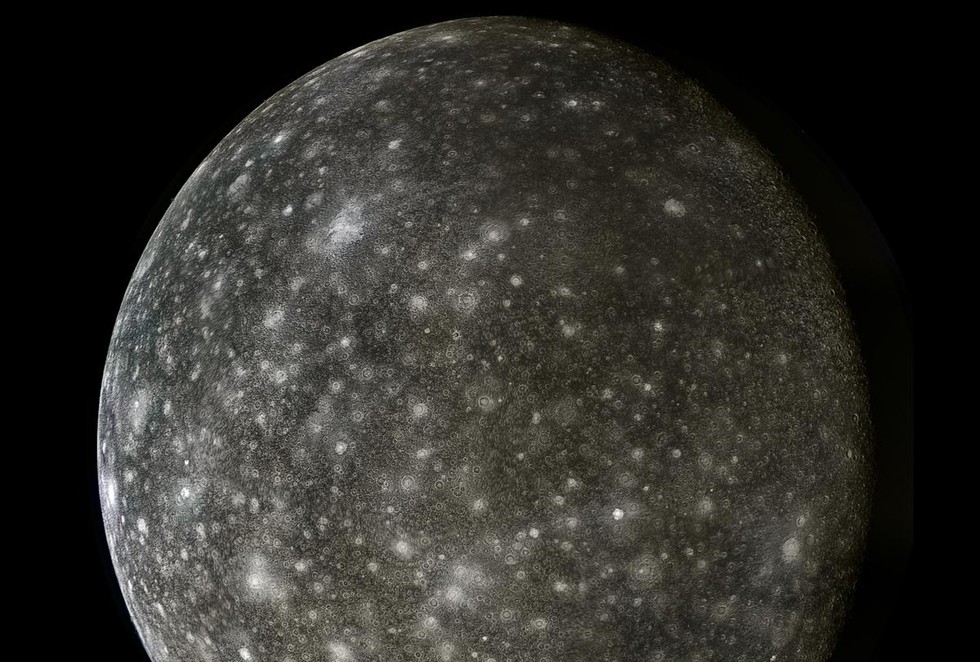An international team of scientists, including researchers from India, made a significant discovery indicating the presence of ozone on Jupiter’s moon Callisto. This discovery provides insight into the intricate chemical processes occurring on icy celestial bodies within our Solar System.
Study Overview
Published in the March 2024 issue of the journal Icarus, the study focuses on investigating the chemical evolution of “SO2 astrochemical ice,” primarily composed of sulphur dioxide (SO2) under ultraviolet irradiation. By analyzing UV absorption spectra of irradiated ice samples, the researchers identified a distinct signature indicating ozone formation.
Importance of Ozone
The ozone layer plays a crucial role in protecting life on Earth from harmful ultraviolet radiation. Without it, increased UV levels would render the planet uninhabitable for many species.
Callisto’s Unique Environment
Callisto, one of Jupiter’s largest moons, stands out due to its composition primarily comprising water ice, rocky materials, sulphur dioxide, and organic compounds. Its heavily cratered surface and relative geological inactivity make it a potential candidate for hosting life beyond Earth.
Recreating Earth-Like Conditions
Led by R. Ramachandran, scientists aimed to recreate the conditions conducive to ozone formation on Callisto’s surface. Experiments conducted at the National Synchrotron Radiation Research Centre (NSRRC) in Taiwan simulated solar radiation hitting Callisto’s surface, facilitating observations of sulphur dioxide ice under irradiation.
Ozone and Habitability
Analysis of the UV absorption spectrum revealed the presence of ozone on Callisto’s surface, suggesting the presence of oxygen, a fundamental requirement for life as we know it. This finding extends to other icy moons, potentially expanding our understanding of habitable conditions beyond Earth.
Multiple Choice Questions (MCQs):
- What did an international team of scientists discover on Jupiter’s moon Callisto?
- A) Presence of water ice
- B) Presence of ozone
- C) Presence of methane
- D) Presence of carbon dioxide
- Answer: B) Presence of ozone
- What role does the ozone layer play on Earth?
- A) Protects from harmful UV radiation
- B) Enhances greenhouse effect
- C) Regulates atmospheric pressure
- D) Prevents acid rain formation
- Answer: A) Protects from harmful UV radiation
- Which moon is highlighted for its potential habitability in the Solar System?
- A) Ganymede
- B) Titan
- C) Callisto
- D) Europa
- Answer: C) Callisto
- Where were experiments conducted to recreate conditions similar to Callisto’s surface?
- A) National Aeronautics and Space Administration (NASA)
- B) European Space Agency (ESA)
- C) National Synchrotron Radiation Research Centre (NSRRC) in Taiwan
- D) Physical Research Laboratory, Ahmedabad
- Answer: C) National Synchrotron Radiation Research Centre (NSRRC) in Taiwan
- What does the presence of ozone on Callisto suggest?
- A) Presence of nitrogen
- B) Presence of water vapor
- C) Presence of oxygen
- D) Presence of carbon monoxide
- Answer: C) Presence of oxygen
